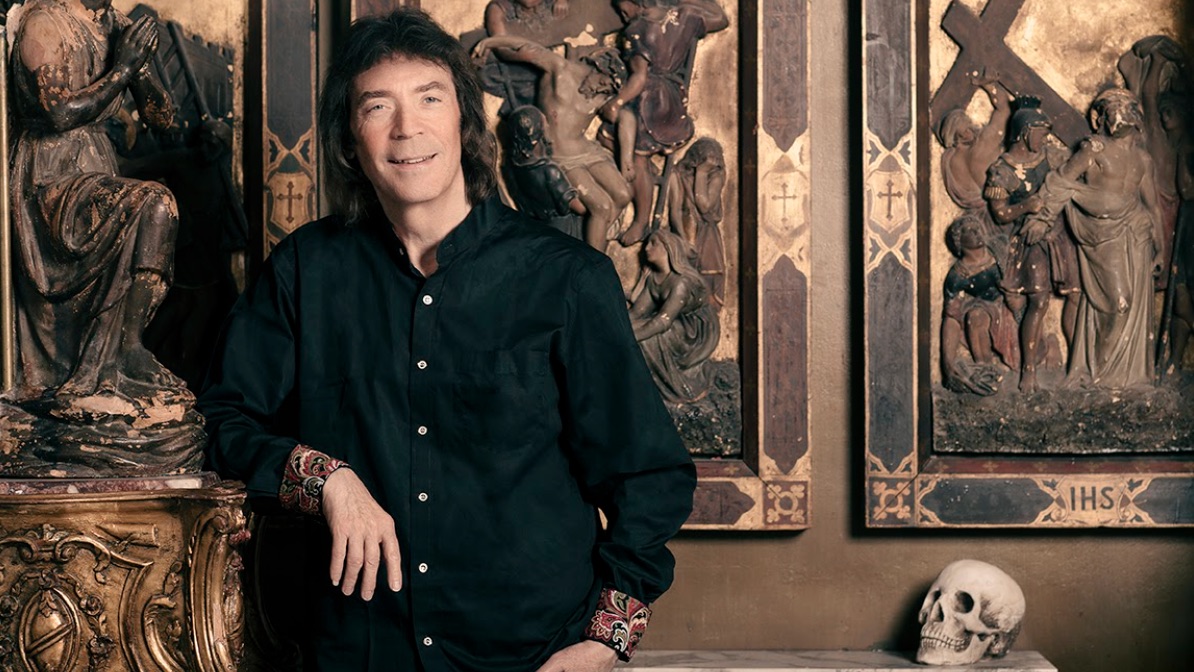From Genesis to Surrender: great Steve Hackett guitar moments
To celebrate the release of Hackett’s new solo album, ‘Surrender of Silence,’ Guitar World looks at some of the prog master’s most enduring work

A pioneer of progressive guitar, Steve Hackett has been pushing the boundaries of the instrument since the early ‘70s as a member of Genesis. Back then, his always inventive rhythm and lead playing combined elements of rock, classical, folk, blues, art rock, orchestral music, avant-garde and more into a stunning stew that influenced everyone from Brian May to Eddie Van Halen (in the latter’s case, Hackett was finger tapping in Genesis as early as 1971, six years before EVH popularized the technique via his own Eruption).
After making his mark with Genesis on prog-rock touchstone albums like Nursery Cryme, Foxtrot, Selling England by the Pound and The Lamb Lies Down on Broadway, Hackett went on to form supergroups like GTR, with Yes guitarist Steve Howe, and Squackett, with Yes bassist Chris Squire, and launch a successful solo career that has seen him release more than two dozen albums in a diverse range of styles, including the 2021 acoustic effort Under a Mediterranean Sky, an all-instrumental, classical-minded effort that puts his nimble and accomplished nylon-string playing front and center.
At the same time, he’s never forgotten his Genesis past. Even as he has just released his newest solo effort, Surrender of Silence – which he calls a “no holds barred” album encompassing everything from “metal macabre to romance – Hackett and his band are on tour playing Genesis’ 1977 Seconds Out live album in its entirety.
To commemorate the release of Surrender of Silence as well as his current Genesis-celebrating tour, Guitar World looks at some of the great musical moments from Hackett’s wide-ranging career.
The Musical Box (1971)
Nursery Cryme was Hackett’s first record with Genesis, and he made his presence known right off the bat with this epic opening track. After a hushed first few minutes, Hackett bursts into a lead solo so wild it borders on acid rock. Things let up again for a spell, only for Hackett to come slashing back in for an even more untethered salvo punctuated by dissonant, skronky tones.
And that’s to say nothing of the regal harmonized-guitar climax, a part so thrilling that Hackett has said Brian May, the king (or perhaps Queen) of stacked harmony guitar lines, has acknowledged it as an influence on his own playing.
The Return of the Giant Hogweed (1971)
If you’re wondering just where Hackett first unveiled his use of two-hand tapping on record, listen to the first 30 second of Hogweed and wonder no more. As for how he came up with it?
"I was trying to play a tiny phrase from Toccata and Fugue by Bach, and I was wondering how to do it, because you couldn't really do it across the strings,” he explained to MusicRadar. “I figured that if I could do it on one string, then I'd be using the fretboard like a keyboard. There's a couple of techniques I took from Bach, like sweep-picking, which is akin to a violinist rocking the bow across the strings.”
Dancing with the Moonlit Knight (1973)
The epic opening cut on Selling England By the Pound spends the first few of its eight-minute run time as a stately piano ballad accented by Hackett’s clean-toned filigrees, before revving into overdrive with heavier power chords and Hackett’s scrambling, occasionally tapped lead lines.
“The second half of the song was supposed to take off like a rocket,” Hackett told Guitar World, “so that was a very satisfying moment from Genesis days.” Indeed it was – and still is.
Firth of Fifth (1973)
Hackett’s extended solo in this Selling England by the Pound masterpiece has long been pointed to by fans as not only a high point of his own catalog, but of progressive rock guitar as a whole. Much of that has to do with his siren-like legato phrases, incredibly creamy guitar tone and exquisite sustain.
As for how he achieved his sound? “In 1973 I’d just got an Echoplex, Hiwatt amp, a Tonebender and a Schaller volume pedal and I noticed when I hit a high F# it would just distort and feedback perfectly,” Hackett told Guitar World. “Although it was a fuzz box, it had a real thick tube sound and the combination sounded great for that melody, so I stretched it out. The guys thought it was a great sound and they really encouraged me to extend the solo.” Which turned out to be a good thing, indeed, as Hackett has referred to Firth as one of “most iconic electric guitar moments from Genesis.”
Fly on a Windshield (1974)
Fly on a Windshield shows Genesis at their most orchestral, with the swelling arrangement highlighted by Hackett’s moaning, soaring lines that add an almost vocal-like quality to the middle instrumental section. He’s called Fly “largely an atmospheric piece, but pretty powerful.” We’d agree.
Ace of Wands (1975)
Hackett recorded his first solo album, 1975’s Voyage of the Acolyte, while he was still a full-fledged member of Genesis, even bringing along Genesis band mates Phil Collins and Mike Rutherford for the ride. And yet, the album is without question a spotlight for Hackett’s adventurous playing, best evidenced on the album’s stirring leadoff track, Ace of Wands.
Spectral Mornings (1979)
The title track to Hackett’s third solo album was originally intended to feature vocals, but as the story goes, after Hackett played the vocal melody to his band on guitar, singer Pete Hicks convinced him to keep it instrumental, effectively talking himself out of a job. Perhaps not the wisest move, but can you blame him? The tone, touch and phrasing here are absolutely sublime. Little wonder why the track has become something of Hackett’s solo career calling-card in the years and decades since.
El Niño (2017)
Hackett took a globe-trotting approach on 2017’s The Night Siren, and to be sure, El Niño comes off like a symphonic showpiece from a far-off land. And it’s all elevated – and, in a way, grounded – by Hackett’s instantly recognizable lead guitar work. For a particularly stirring version, check out the 2017 live performance from Birmingham above.
Adriatic Blue (2021)
Much of Hackett’s work over the years, in particular with Genesis, is characterized by not just stunning playing, but an impressive ability to seamlessly weave together disparate styles and approaches within a single song or solo.
Every so often, however, Hackett sticks firmly to one sound, as is the case with much of the music on the gorgeous Under a Mediterranean Sky. Among the many highlights on the record is Adriatic Blue, which presents Hackett’s nylon-string playing in a fully unaccompanied classical guitar forum, allowing his stunning technique, characterized by precision-picked lines, elegant counterpoint melodies and dazzling fretwork to come to the fore. Fans of early Hackett solo acoustic instrumental pieces like Genesis’ Horizons will find plenty to love here.
Fox’s Tango (2021)
Hackett has said this Surrender of Silence cut presents his playing at its angriest. “I really let rip here.” And indeed he does. Hackett’s guitar tears through the bordering-on-symphonic-metal landscape, building to blistering, occasionally harmonized crescendos that match the lyrics – “a protest song about life’s inequalities” – in emotional angst and despair every step of the way.
Get The Pick Newsletter
All the latest guitar news, interviews, lessons, reviews, deals and more, direct to your inbox!
Since 1980, Guitar World has been the ultimate resource for guitarists. Whether you want to learn the techniques employed by your guitar heroes, read about their latest projects or simply need to know which guitar is the right one to buy, Guitar World is the place to look.

